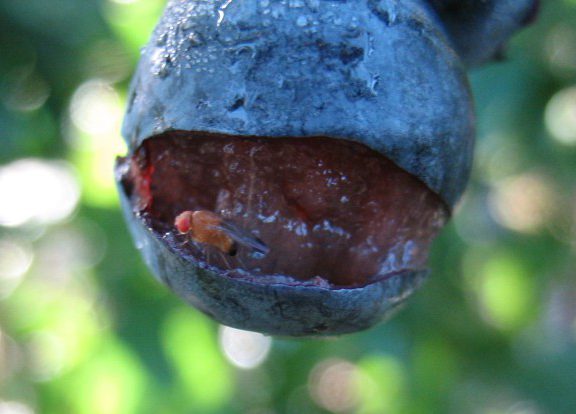Blueberry
-

A new in-service training series is set to begin this fall that will provide Extension agents in the southeast with the latest information on integrated pest management within various commodity areas. Trainings will be led by specialists from the University of Georgia with invited speakers from institutions within the Southern Region Small Fruit Consortium (SRSFC).…
-

Written By: Ash Sial, University of Georgia Blueberry Entomologist The spotted wing drosophila (SWD), Drosophila suzukii (Matsumura) (Diptera: Drosophilidae) is an invasive and economically important pest of many soft-skinned fruits such as blueberries, blackberries, raspberries, strawberries, cherries, and other. Since its first detection in California in 2008, SWD spread rapidly across the United States. It…
Posted in: Blueberry, chemical control, commercial, cultural control, insect pests, Monitoring, organic -

Written By: Emily Cabrera, UGA IPM Communications CoordinatorExpert Source: Ashfaq Sial, UGA Blueberry Entomologist Native to North America, blueberries are the most recently commercially domesticated fruit in the United States. Just a little over a century ago researchers began studying this wild berry with an intent to develop improved varieties for commercial cultivation. Fast forward…
-

Ash Sial, Department of Entomology, University of Georgia;Renee Holland, UGA Extension, Bacon County I have recently received reports of slug infestations in Georgia blueberries. A number of slug species including Limax spp., Arion spp., and Deroceras spp. are known to infest blueberries. Slugs are soft-bodied mollusks without a shell. They can be 0.25-10 inches long.…
-

Written By: Jonathan Oliver, Fruit Pathologist Organic food sales topped $50 billion in the United States in 2018. Statistics from the Organic Trade Association tell part of the story of this growing market: Fruits, vegetables and other specialty crops combined to make up 36.3% of total organic sales up 5.6% from the previous year. Naturally,…
-

Written by: Emily Cabrera, UGA IPM Communications CoordinatorExpert Source: Ash Sial, Blueberry Entomologist & UGA IPM Coordinator The University of Georgia has just been awarded a $5.4 million grant by the U.S. Department of Agriculture, National Institute of Food and Agriculture through the Specialty Crop Research Initiative (SCRI) to develop long-term sustainable methods for controlling…
-

Written By: Ash Sial, Blueberry Entomologist; James Jacobs, Pierce County CEC; and Zack Williams, Bacon County ANR agent Over the past few years whiteflies have emerged as a major threat to several crops in Georgia and other states in the southeastern United States. In blueberries, whitefly populations typically increase after the end of harvest and…
-

Written by: Ashfaq Sial, Associate Professor, Department of Entomology, University of Georgia Spotted wing drosophila (SWD) control programs should consist of three major components: 1) monitoring and identification, 2) preventative pest management tactics (including exclusion, sanitation, frequent harvest intervals, pruning, mulching, and resistant varieties), and 3) curative pest management tactics such as the judicious use…
Posted in: Blueberry, chemical control, cultural control, exclusion, insect pests, Monitoring, organic, Prevention -

Written by: Ash Sial, Associate Professor, Department of Entomology, University of Georgia Over the past few days, I have received several calls from Extension Agents about prevalence of soft fruit, vertical fruit split, small berry size and some reports of worms in the fruit. Although it is difficult to determine the exact reasons, the unusual…